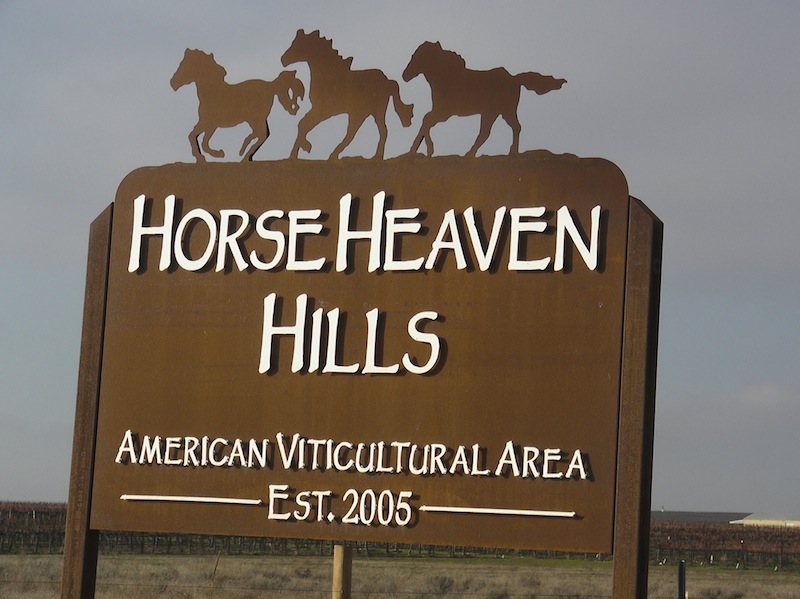
If Cabernet Sauvignon is king in Washington – and it is – then the Horse Heaven Hills is the state wine industry’s most important American Viticultural Area.
Certainly, Red Mountain and the Walla Walla Valley have emerged as Washington’s trendiest wine regions, but the Horse Heaven Hills is the state’s future, and it’s already flexing its muscles.
In the past five years, the Horse Heaven Hills has grown in total acreage by 29.6 percent. Of that, red grapes have grown 34.4 percent. And most astonishingly of all, Cabernet Sauvignon acreage has gone up a remarkable 47.1 percent.
“We have the right climate up here,” said Rob Mercer, owner of Mercer Estates in Prosser.
The Mercer family has been in agriculture in the Horse Heaven Hills for more than 100 years, and today it farms more than 10,000 acres of vineyards and row crops.
“We’re excelling in Cabernet Sauvignon, and it’s our strategy to go with those strengths.”
The Horse Heaven Hills is a 570,000-acre region south of the Yakima Valley and Tri-Cities. Mercer’s uncle, Don Mercer, planted the first wine grapes in the region, putting in a few acres of Cabernet Sauvignon in 1972 at what then was known as Mercer Ranch Vineyards and now is famed Champoux Vineyards – easily the most-prized grapes in Washington.
“It was pretty fortuitous and somewhat lucky that we planted the right varieties to start with,” Mercer said of his uncle’s selection more than 40 years ago. “That’s turned out to be a great decision. Those original 5 acres have led to some pretty tremendous things since then.”
Horse Heaven Hills is state’s 2nd-largest AVA
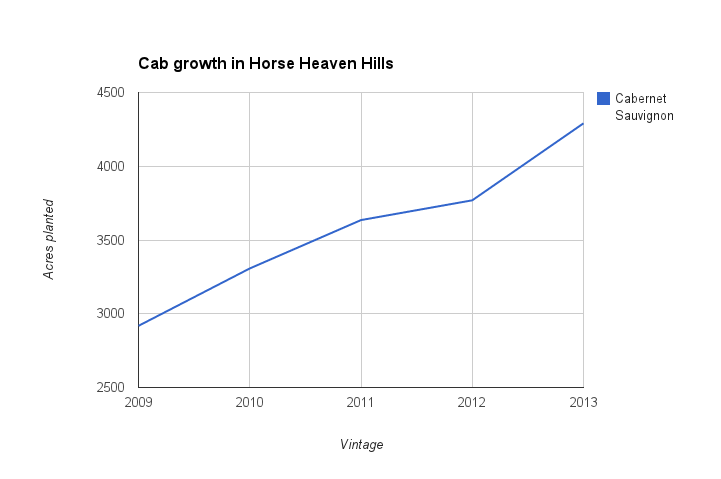
With 11,731 acres planted, the Horse Heaven Hills is Washington’s second-largest wine grape region, behind the more established Yakima Valley’s 16,042 acres. The Horse Heaven Hills is famous for dry-land wheat and row crops, particularly carrots, potatoes, sweet corn and onions. It is a wide-open and sparsely populated swath of land that is bordered by the Columbia River to its east and south.
Rob Andrews, who has about 2,000 acres of vines and is the largest grower in the Horse Heaven Hills, is a third-generation farmer in the region. Ironically, he started growing wine grapes for an Idaho winery.
In 1979, Ste. Chapelle of Caldwell, Idaho, was looking for grapes. Andrews heard about it, met with the winery and was contracted to plant 17 acres of Cabernet Sauvignon in 1980 and 16 acres of Chenin Blanc in 1981. By 1984 – just as Andrews was getting a full crop from the vines – Ste. Chapelle canceled the contract. Fortunately, Columbia Crest was just getting started, so parent company Ste. Michelle Wine Estates needed grapes.
“They’ve used our grapes since then,” Andrews told Great Northwest Wine. “We’ve worked together since.”
Ste. Michelle drives Horse Heaven Hills growth
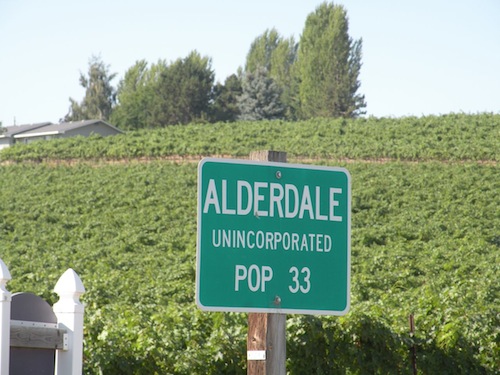
Andrews, whose original vineyard is McKinley Springs, slowly expanded. By 1995, he had perhaps 75 acres in the ground. But Ste. Michelle needed more grapes, as did Hogue Cellars in Prosser, which was becoming one of the state’s largest producers. So they contracted with Andrews to expand by 800 acres.
“That was a big jump for us,” he said.
From 1997 to 2006, he added another 400 acres, and from 2007 to 2009, he planted another 1,000 acres. All of this was for Ste. Michelle – and most of it has been Cabernet Sauvignon.
In November 2010, the Horse Heaven Hills was hurt with a sudden freeze just before Thanksgiving. Andrews was one of the hardest-hit growers; of his 2,000-plus acres of grapes, he harvested almost nothing in 2011. Many of the vines he planted in 2008 and 2009 were badly damaged and had to be replanted. Most of those vines are finally in full production and helped contribute to the record 42,600 tons of Cabernet Sauvignon harvested last fall in Washington.
“2010 was the worst,” he said, adding that in his 34 years of growing wine grapes in Washington, he’s lost only two crops, with the other being 1991 when he had far fewer vines.
Andrews is hardly done expanding. Ste. Michelle already has him locked in to add 160 acres in 2015, 250 acres in 2016 and another 250 acres in 2017. He might do more, but those are the minimums he has planned. Again, all of the grapes already are contracted to Ste. Michelle, and 90 percent will be red grapes – with most of them Cabernet Sauvignon.
In addition to McKinley Springs, Andrews’ vineyards include Andrews Horse Heaven Ranch and Andrews-Hogue, a vineyard he started in 2002 with Mike Hogue, former owner of Hogue Cellars. Andrews has since bought out Hogue’s portion.
Andrews farms with his brother Scott and his brother-in-law Doug Rowell. Rowell is the winemaker for McKinley Springs, their 6,500-case winery located at the vineyard.
Not far away, his oldest brother, Mike, owns Coyote Canyon Vineyard, which he began planting in 1994. Today, it is 1,135 acres of vines, making it the fourth-largest vineyard operation in the Horse Heaven Hills. Though he sells to about 10 smaller wineries and makes his own wine at Coyote Canyon Winery in Prosser, his biggest customer is Ste. Michelle.
“Ste. Michelle is driving the growth up here,” he said, adding that though other large producers have approached him, “we’re happy with and committed to Ste. Michelle.”
Mike Andrews doesn’t have any expansion plans for this year, but he is scheduled to add another 150 acres in 2016. Most of it will be Cabernet Sauvignon, and all of it will go to Ste. Michelle.
One grower who is expanding this year is Mercer. Rob Mercer said he is adding 300 acres this year. His family is the region’s third-largest grower, just behind Ste. Michelle with its vineyards on Canoe Ridge and at Columbia Crest in Paterson. Mercer said most of his new acreage will be Cabernet Sauvignon, though he also will add Merlot, Syrah and a bit of Malbec.
Water is key to Horse Heaven Hills growth
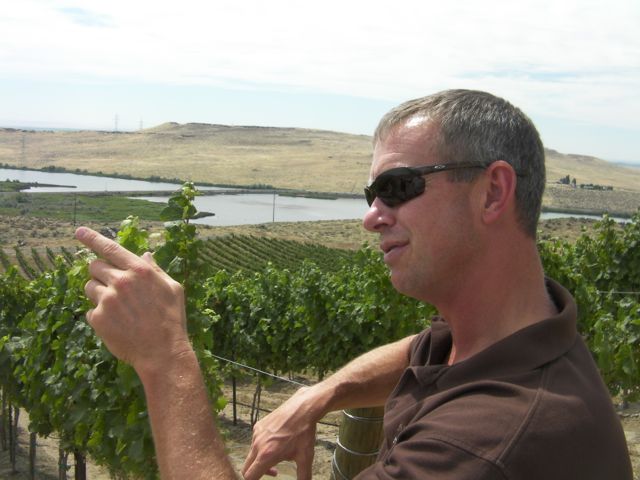
By necessity, Mercer has become something of an expert in water usage – seeing as his family’s farm relies almost completely on it.
“I spend a whole lot of my time working on water issues,” he said. “Not just application, but also laws and future use.”
Through a change in law more than a half-decade ago, Mercer is able to use conservation methods to reduce his water use on one area of his farm and apply it on newly purchased ground, where he will plant his new grapes.
Mercer is bullish on the future of the Horse Heaven Hills and the Washington wine industry in general. He believes the state will double from its current 50,000-plus acres of wine grapes in the next 15 years – and the Horse Heaven Hills will be a major driver.
“I think there’s a great opportunity to grow Washington wine,” he said. “And there’s a lot of opportunity in the Horse Heaven Hills that has yet to be tapped.”
Doug Gore, who was Columbia Crest’s first winemaker and today oversees Ste. Michelle’s winemaking and vineyard operations as a senior executive, is bullish on the region.
“We love the Horse Heaven Hills and the fruit it gives us,” he said. “The wines stand on their own. Generally speaking, it’s good land with good water rights. We have a lot of vineyards in the Horse Heaven Hills. It’s a great grower community.”
Champoux got start with Ste. Michelle
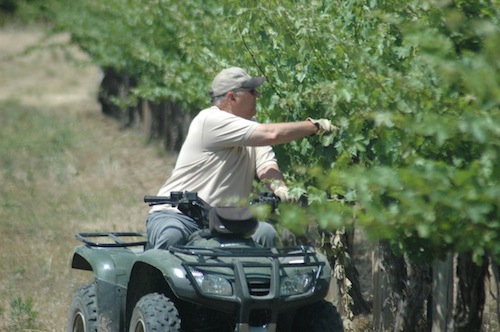
One grower who doesn’t sell any of his grapes to Ste. Michelle is Paul Champoux, but the owner of Champoux Vineyards got his start with the company. Champoux grew up in the Yakima Valley and was farming hops until he took the opportunity to work for Ste. Michelle in 1979 when it began planting wine grapes in Paterson at what now is Horse Heaven Vineyards at Columbia Crest.
“I didn’t know anything about grapes at that time,” he said with a chuckle.
Ultimately, he ended up managing Mercer Ranch Vineyards after it had been sold by the Mercer family. In 1996, he put together a group to buy the vineyard. His four partners are the owners of Powers Winery in Kennewick, Woodward Canyon Winery in Lowden, Andrew Will on Vashon Island and Quilceda Creek Vintners in Snohomish.
The relationship has been beneficial for all involved, with Champoux growing the most-sought-after grapes in the state and his winery partners benefitting from the fruit and the fame. They also sell to more than two dozen other wineries.
In 2011, Champoux made what is likely to be his final expansion. After the 2010 freeze, he tore out one of his oldest vineyard blocks – one that had been heavily damaged – and replanted it. He also replaced a Riesling block with Cabernet Sauvignon. Today, Champoux Vineyards is 190 acres, of which 140 are planted to Cabernet Sauvignon.
The neighborhood around Champoux is becoming a who’s who of vineyards. Not far away is Double Canyon, a 90-acre vineyard and label owned by Pine Ridge Vineyards in Napa Valley’s Stags Leap District. Phinny Hill Vineyard, just to the south of Champoux, is a favorite with top Washington winemakers. Just across the road is Palengat Vineyard, owned by the Golitzen family (Quilceda Creek) and farmed by Champoux. He also helps manage Discovery Vineyard, a 24-acre vineyard that overlooks the Columbia River.
Champoux said that most of the growth is taking place in the Alderdale area, not far north from the Columbia River, though the Horse Heaven Hills has vineyards all the way to its eastern border near the Wallula Gap. The potential, Champoux said, is only limited by irrigation.
“If you can get water to it, the Horse Heaven Hills can grow anything,” he said.
Champoux said that most land in the region is tied up with other crops – almost all of which use way more water than grapes. On average, wine grapes use anywhere from half to a fourth as much water as other crops.
“Grapes use 12 to 18 inches of water per year,” he said. “Row crops use twice that much, and orchards use 35 to 40 inches per year.”
Thus, the potential is there to convert existing farmland to grapes and have enough water to use on land that has never been planted.
“There are a lot of areas that haven’t been tapped that will be phenomenal one day,” Champoux said. “There are a lot of south slopes in the AVA with lots of different kinds of soils. The Horse Heaven Hills has the potential to be as big as we need it to be.”

Leave a Reply